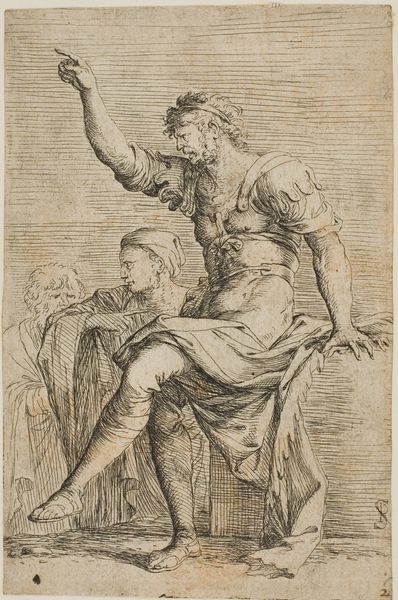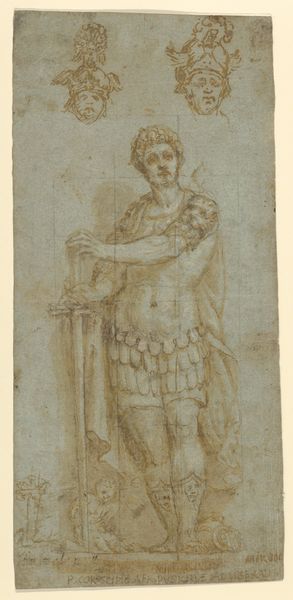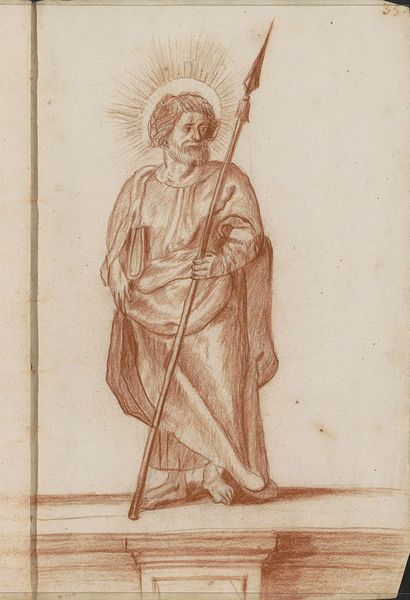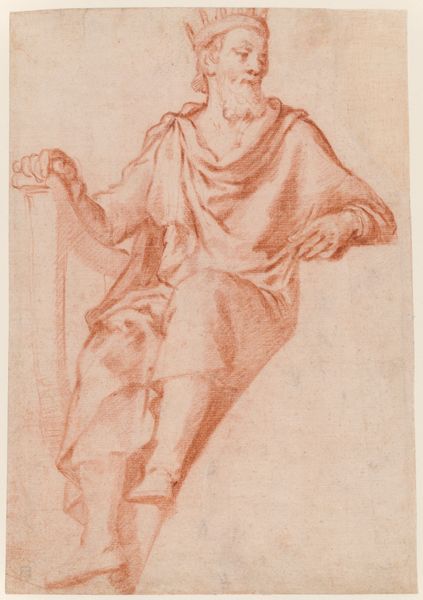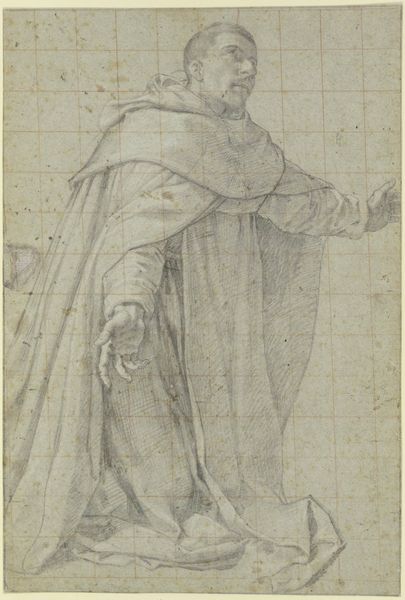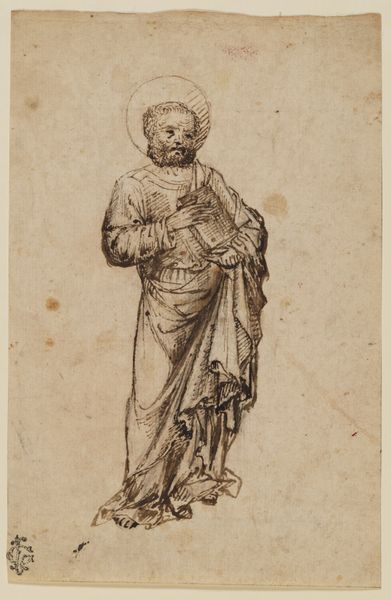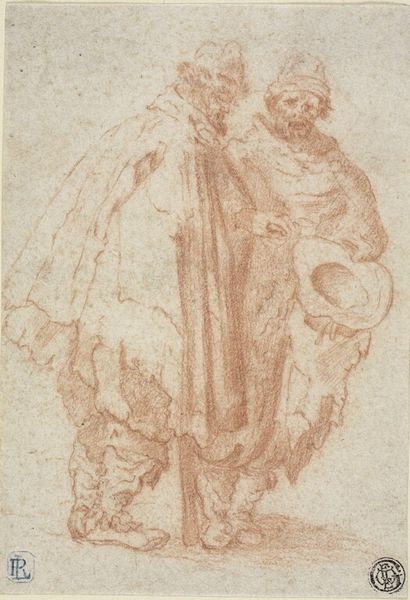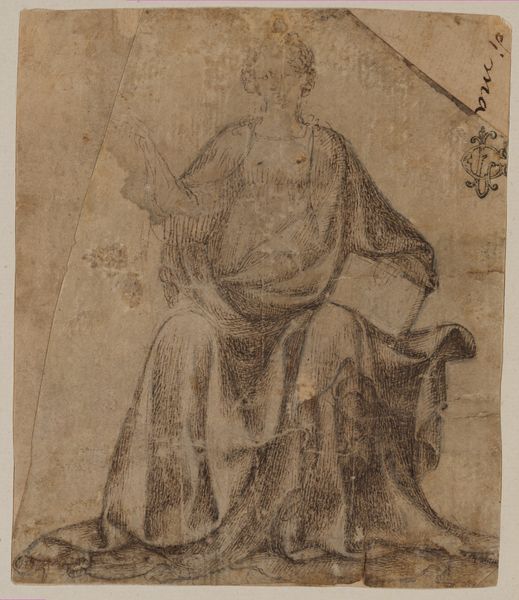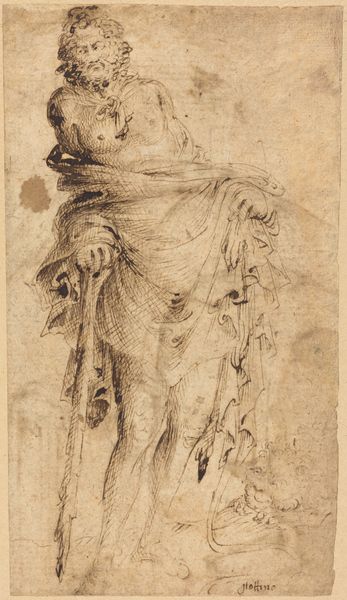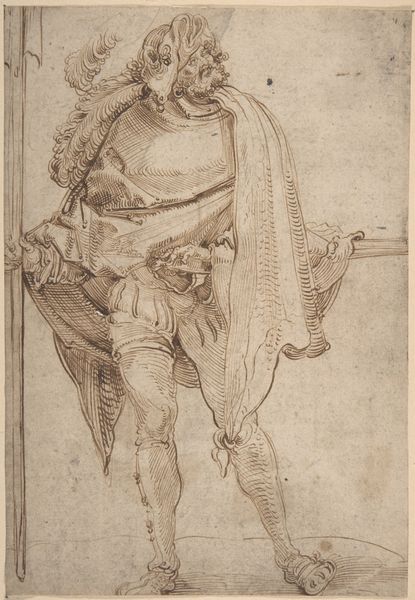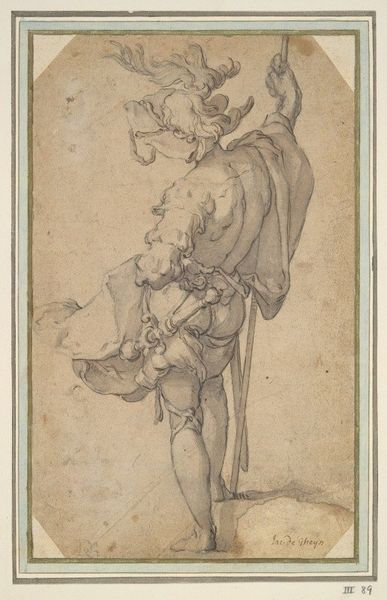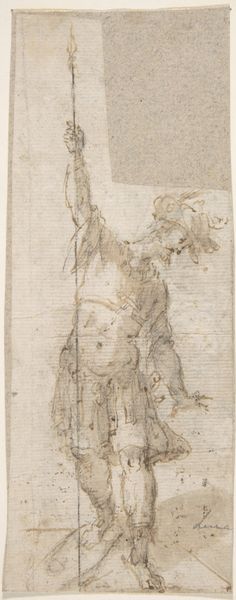
drawing, charcoal
#
portrait
#
drawing
#
charcoal drawing
#
pencil drawing
#
portrait drawing
#
charcoal
#
academic-art
Dimensions: 208 mm (height) x 160 mm (width) (bladmaal)
Curator: Here we have "Soldier with plumed helmet, after Raphael," a drawing executed between 1568 and 1640 by Giuseppe Cesari, currently held at the SMK, Statens Museum for Kunst. Editor: My first impression is one of controlled energy. The cross-hatching gives the impression of depth, but also vibrates with a barely contained liveliness, don't you think? Curator: Absolutely. Cesari clearly engaged deeply with Raphael's approach. What we are seeing is a drawing primarily crafted with charcoal, highlighting academic techniques prominent at the time. We observe careful considerations of shadow, form and tone; likely from observing a figure or a casting from life. The material informs the work profoundly, right? Editor: Agreed. Note the ochre-toned paper too. It lends an immediate warmth to what could be quite a stern subject. Consider its role in establishing a base value, allowing the charcoal lines to articulate form more effectively, the material processes fundamentally direct our reading. Curator: Furthermore, given its status as a copy, the role of labor is something we have to think about, right? Academic art relied on the skillful rendering and near-exact copying of previous masterpieces as part of artistic training and, eventually, a route to a commission, so it makes sense Cesari worked on one after Raphael. Editor: The very act of replication speaks to the authority and enduring relevance of Raphael's vision. Observe how that directional hatching accentuates the voluminous plume in the soldier’s helmet, contrasted by that wonderfully rendered musculature. He really captured the dynamism of his subject through the simplest formal gestures. Curator: Definitely! The market for these works mattered; artists had to reproduce popular older images in a way that appealed to certain tastes and classes within the artistic economy. This piece is, after all, academic-art that's concerned as much with profit, demand, and audience as it is with conveying any deeper meaning through individual inspiration. Editor: Yet, that tension—between reproduction and creative gesture—is part of what fascinates me. Thanks for contextualizing its art historical position, but after examining closely, it makes one ponder those contrasts. Curator: Indeed! Examining art from different points allows a comprehensive reading for today's viewers.
Comments
No comments
Be the first to comment and join the conversation on the ultimate creative platform.

